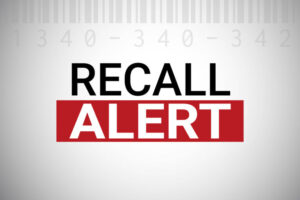Professional truck drivers have long been known for their independence.
In decades past, the practice was to just give a driver the keys, a truck and a dispatch and turn them loose with instructions to call if there was a problem. Most of the time, the job got done.
For the most part, those days are over.
In-cab video systems, combined with vehicle telematics and the availability of more data than ever before, have virtually made the “cowboy of the highway” image of trucking obsolete. Today, Artificial Intelligence (AI) is helping guide that process.
Perhaps the beginning of the end was when pagers became widely available in the ’80s and ’90s. At any time, dispatchers or other carrier personnel could send a page to a driver; the receipt of that page meant, “stop and call in.”
As technology improved, the message delivered by pagers included a phone number, making it possible for more people (anyone with the pager’s number) to contact the driver. Clever users made up numeric codes to convey messages or indicate the priority of the page.
Some might say the real demise of trucker independence came with the introduction of satellite tracking and messaging. Dispatchers could pinpoint a driver’s location within a few feet and could send and receive messages nearly at will. These devices communicated other data, too. Carriers not only knew where drivers were, but how fast they were going, how many times they hit the brakes hard, when they idled their trucks and more — all recorded by the truck’s electronic systems and sent directly to dispatch.
Of course, cellphones took everything further.
Drivers could be contacted almost any time by carrier representatives — and by the folks back at home, too. As cellphones morphed into smartphones — basically handheld computers that “also made phone calls” — apps like FaceTime used video to create the next best thing to actually being there. This actually helped many drivers feel more connected to their family, friends and loved ones (in addition to dispatch).
It was only a matter of time until advances in technology led to dash cameras.
Like the evolution from cellphones to smartphones, dash cams have evolved into something more. These cameras don’t just take pictures or record video; the devices can also “decide” what video is worth sharing and who should see it. Many of these systems include multiple lenses that record the view to the sides of the vehicle and even inside the cab.
Many drivers rebelled, at least at first. After all, no independently minded truck driver wanted the dispatcher or safety staff to be able to look in at will!
It didn’t take long, however, for drivers to become more comfortable with the systems.
Perhaps the largest benefit of dash cams, many drivers discovered, was exoneration in the event of a collision. Finally, the carrier’s safety department could actually SEE what happened instead of depending on the driver’s story and the police report.
In addition, dash cam vendors and motor carriers made convincing arguments that videos showing a driver’s actions would be used for training purposes, providing an opportunity for drivers to improve their skills and safety records.
Still, concerns persisted about drivers’ privacy.
After all, a camera facing the cab and driver could also record the driver in the sleeper. Drivers could be videoed in stages of undress or while scratching a rather personal spot on their bodies. They might be harassed if a video showed them yawning or not checking a mirror often enough.
Those with excellent driving records without crashes or tickets were offended that the carrier wanted more proof of their reliability. Some drivers quit. Most simply adapted. Some carriers compromised by only using data from forward-facing cameras, but many of them, about 25% or so, went with 360-degree systems.
AI has improved the process (or made it more invasive, depending on your point of view). Today’s camera systems are designed to record video continuously while the vehicle is in motion; however, all of that video isn’t saved.
Obviously, a carrier representative isn’t going to sit and watch hours and hours of video for each driver every day, especially when the driving might occur outside office hours. Video system vendors responded by using vehicle telematics to determine which segments of video to save. If an accelerometer built into the camera detects a sudden slowdown, such as a collision for example, video of the event is saved for review.
Telematics send data about hard stops or swerving, which is matched with video for a closer look.
Today, AI can read road signs in the video and detect less obvious dangers, including driver behavior.
Use of a cellphone while behind the wheel triggers video recording. Some systems combine biometrics and are able to detect driver fatigue based on nodding, yawning or other input.
Speed limit data can now be obtained through GPS or routing systems, but AI can detect construction zones or areas where speed limits are reduced. This enables carriers to coach drivers on speeding even when limits are much lower than a company’s maximum speed.
Vendors of video systems don’t publicize everything their cameras detect, but AI is used to monitor “unsafe driving behavior” or actions. Not wearing your seat belt? It’ll be on video. Reading a text? Got it. Driving with a drink in one hand and a burger in the other? You’re dining with the safety director. Spending too much time watching the accident across the median, and not enough watching the road? Yep — so is the team back home.
These systems now allow service providers and carriers to create a “driver report card.”
The newest systems come with a driver interface that alerts the driver, giving them a chance to correct their actions.
Views from different cameras are used, so that a lane departure or following too closely will result in a visual and audio warning. These alerts help the driver understand what’s being monitored and recorded so that the behavior can be corrected right away instead of waiting for a discussion with safety.
The trucking industry has tried to put together a driver “report card” for many years, with varying degrees of success. Now that more behaviors are observable than ever before, video system vendors are offering their own versions of scoring systems that carriers can use to evaluate drivers — and that drivers can use to evaluate themselves.
There’s no stopping progress, as they say. Hopefully, drivers losing part of their independence on the job is balanced by improved safety and efficiency.
Cliff Abbott is an experienced commercial vehicle driver and owner-operator who still holds a CDL in his home state of Alabama. In nearly 40 years in trucking, he’s been an instructor and trainer and has managed safety and recruiting operations for several carriers. Having never lost his love of the road, Cliff has written a book and hundreds of songs and has been writing for The Trucker for more than a decade.















Excelente articulo los delicito
Why I left OTR to local because if I’m gonna be watched all day and not be trusted, no point of being behind a wheel of a sleeper for anymore. Jb hunt has lost so many drivers with the switch and it’s to account for there revenue lost as well. There also facing lawsuits over the Inward Cameras.
There are companies that don’t have the camera facing in for company drivers. Owner/Operator don’t have to comply.
Is this AI in cab camera technology applied in commercial airplanes & buses, trains, law enforcement automobiles, cruise ships, etc, etc? Also, the insurance companies are giving favorable premium discounts to trucking companies who place cameras in cabs. How soon will this apply to the general public in their personal vehicle. What if the government & insurance institutions made it mandatory in all vehicles.?! Waring: In cab AI cameras coming soon to a vehicle near you!
This privacy invasion seems over the top.
I have never worked in a company that had delinquent drivers; Mostly over worked. This is borderline slave labor. Constant supervision.
I have been driving since Cabovers where the norm. I don’t like the fact that we are micromanaged now a days. My question is, are cameras watching the dispatchers.
I have one of these systems in my trucks, AI is not very intelligent! I get alerts that my trucks are not stopping at stop signs when in the video they are clearly going thru a green light. AI cannot tell the difference if you actually are following too close or if you were cut off by an impatient auto. it still dings the driver for an infraction and alerts the company. I am an owner and still drive,and spend a lot of time going thru the alerts I get and have to discard them due my drivers not doing anything wrong.
When I did have a new driver cross over into oncoming traffic NO ALERT WAS SENT.
Apparently that’s not worth letting me know about!
The camera is the company’s weapon for blackmailing drivers. My experience is that every time you raise your voice or ask for something or refuse something that doesn’t suit the company, some videos appear and then the punishment comes.